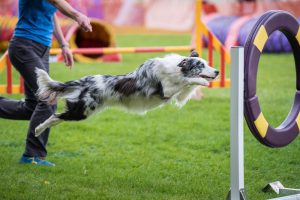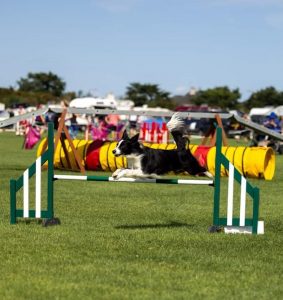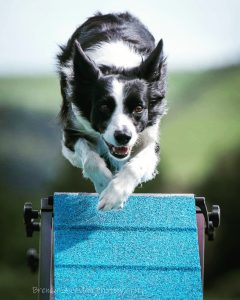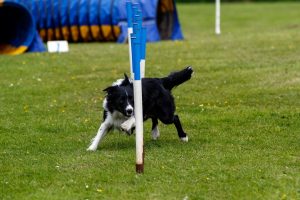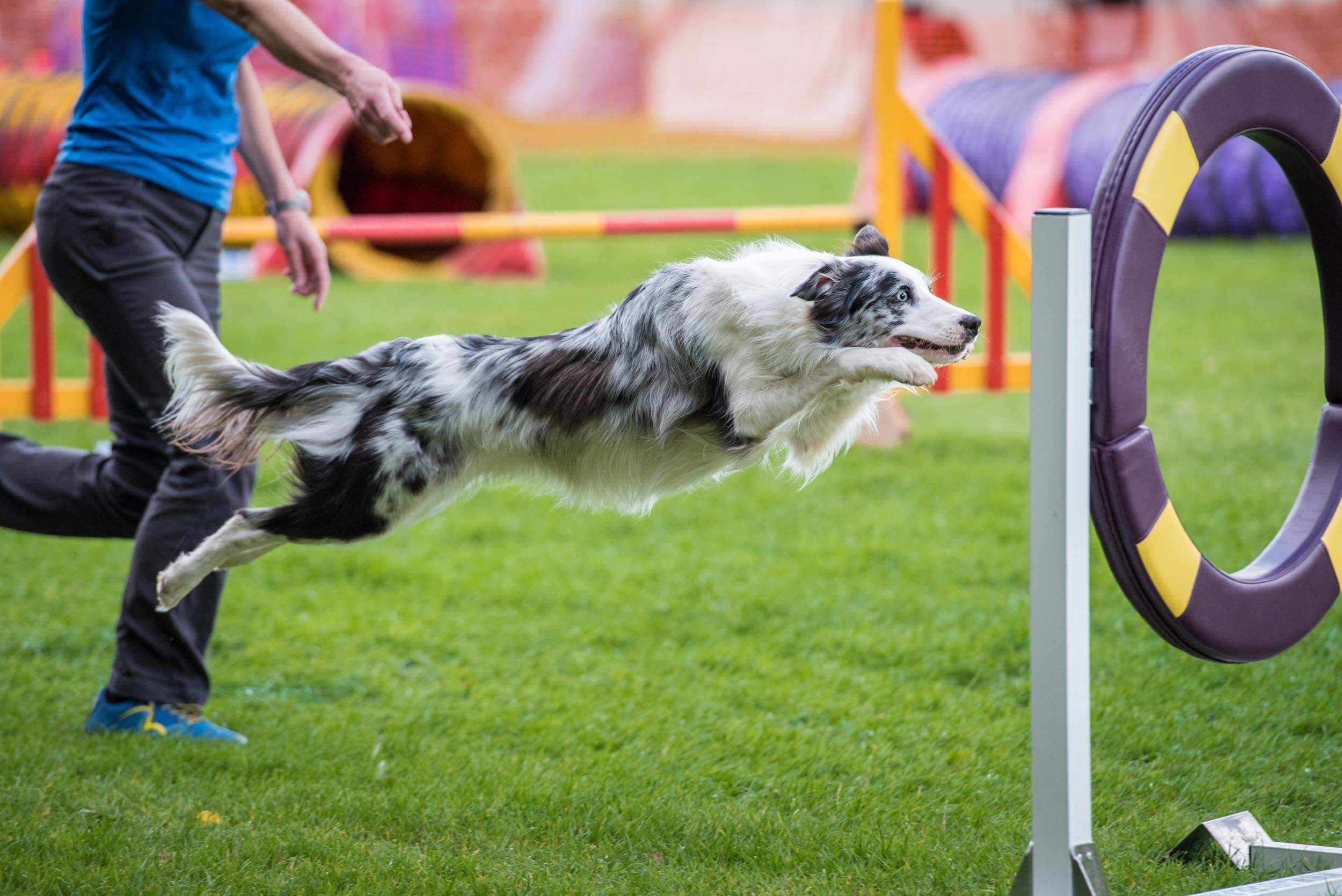
Agility
What is Agility?
Agility is a fast-paced exciting team sport for you and your dog. The handler guides the dog through an obstacle course as fast and accurately as possible. There are Agility and jumping courses. Not only does Agility test your dog’s fitness but it is a sport that demonstrates the connection and teamwork between you and your dog.
Obstacles that are currently used in Competition are jumps, tunnels, tyre, weave poles and a wall. Contact equipment = A-Frame, Dog Walk and See Saw.
Grades
Beginner handlers and dogs start at grade 1. There are seven grades in total. Dogs competing at grade 7 are eligible to enter championship classes, to compete for a coveted green star. Championship classes consist of two qualifying rounds: one agility and one jumping round. The top dogs after these two rounds go through to the final, which is an agility round. If the winning round is clear, the handler and dog are awarded a green star. When a dog wins five green stars (under at least three different judges) it becomes an agility champion.
When to train
Dogs cannot compete under Irish Kennel Club rules until they are 18 months old. A well socialised dog, who is motivated by food and particularly toy rewards, is a good candidate for agility training. Some obedience skills, such as a recall and a wait are also useful. Most agility training can be taught on the ground. Training over jumps and contact obstacles can wait until a dog is older, and full height equipment should not be used until the dog’s growth plates have closed and the dog is physically mature.
What do I need to know to take part?
To compete, dogs must be either registered with the Irish Kennel Club on the Pedigree register or in the case of non-Pedigree, registered on the Irish Kennel Clubs Activities register and must be a minimum of 18 months of age.
Dogs compete in groups according to their height, there are currently 4 heights in Irish Kennel Club competitions, large, intermediate, medium & small.
Competitors taking part in any licenced Irish Kennel Club event must familiarise themselves with the Irish Kennel Club rules and regulations.
Before competing make sure you buy an agility record book, you will need this to have your dog measured and for recording your competition wins and clear rounds.
Grades
An agility competitor and their dog advance from grades 1 to 7; grade 1 is the lowest level and grade 7 the highest level. Competitors and dogs that are new to agility will be able to enter classes suitable for grade 1. As you and your dog improve you may be able to progress to the next grade.
Now you are ready to Compete.
Progression
Dogs progress through grades with Agility and Jumping wins.
Here are the I.K.C. Agility Rules and Regulations
National Competitions
Irish Kennel Club shows are held in various locations around Ireland. The I.K.C. Facebook page contains details of upcoming events and seminars – (1) I.K.C. Competitive Agility | Facebook

